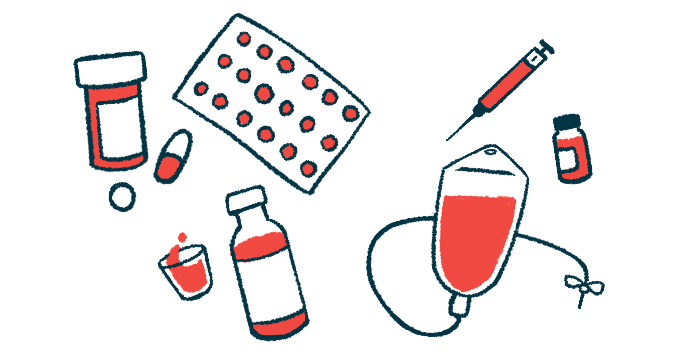Early high-efficacy MS treatment recommended for young patients
Risk of disability worsening is reduced with early treatment, global study finds

High-efficacy therapies given early can significantly reduce the risk of disability worsening in children and adolescents with multiple sclerosis (MS), particularly when treatment is started while patients have fairly minimal disability, according to a new study.
While lower-efficacy therapies were also associated with a reduced risk of disability progression in people with pediatric-onset MS (POMS) compared with no treatment, their benefits were more modest.
“We found that patients who were treated with high-efficacy disease-modifying therapies during the initial phases of their disease benefitted the most compared to patients who were not treated,” Sifat Sharmin, PhD, a co-author of the study at The University of Melbourne in Australia, said in a press release.
Based on these findings, the researchers recommend “that young people with pediatric-onset multiple sclerosis should be treated with high-efficacy disease-modifying therapy while they are still only affected by minimal or mild disability.”
The results, presented at a conference last year, have now been published in detail in The Lancet Child & Adolescent Health in a study, titled “Disease-modifying therapies in managing disability worsening in paediatric-onset multiple sclerosis: a longitudinal analysis of global and national registries.”
More than 20 treatments approved for relapsing MS
More than 20 treatments have been approved for people with relapsing forms of MS, and can be broadly grouped into two categories: high-efficacy and low-efficacy treatments.
High-efficacy therapies are newer medications that are powerful for reducing MS activity and slowing disease progression but also tend to carry greater safety risks. Low-efficacy therapies are generally safer medicines that are also effective for MS, but their benefits aren’t as powerful.
With these two types of therapies now widely available, there’s been debate about how best to use them. Is it generally better to start a patient on a safer, low-efficacy drug, and then transition to a more effective therapy as needed, or should patients start with a high-efficacy drug right away?
Studies in adults with MS have generally shown that early treatment with high-efficacy therapies is better for delaying disability progression than starting on a lower-efficacy treatment. However, little data are available on whether this also applies in POMS, which is a rare form of MS that develops in childhood or adolescence.
To find out more, a team led by scientists in Australia analyzed outcomes from more than 5,200 people with POMS. The data were collected from 151 centers across 41 countries, and most patients were followed more than five years. Most of these patients started on a therapy during study follow-up, though less than half (40.1%) started treatment before age 18.
Specific high-efficacy treatments assessed in this study included Lemtrada (alemtuzumab), Mavenclad (cladribine), Zinbryta (daclizumab), Gilenya (fingolimod), mitoxantrone, Tysabri (natalizumab), Ocrevus (ocrelizumab), rituximab, or stem cell therapy.
Low-efficacy treatments, in turn, included Tecfidera (dimethyl fumarate), glatiramer acetate (sold as Copaxone and generics), interferon beta therapies, and teriflunomide (sold as Aubagio and generics).
“This is the largest study of its kind for paediatric MS,” Sharmin noted.
Based on Expanded Disability Status Scale (EDSS) scores, the patients were divided into four groups: minimal disability (EDSS 1.5 or lower), mild disability (EDSS 2 or 2.5), moderate disability (EDSS 3 or 3.5), and severe disability (EDSS 4 or higher, reflecting difficulty walking).
The team then used statistical models to assess how different types of treatment affected the likelihood of moving from one category to another.
Results showed that, when high-efficacy treatment was given to patients with minimal disability, the likelihood of these patients progressing to mild disability was reduced significantly, by about 59% compared with untreated patients.
High-efficacy MS drugs reduced likelihood of worsening disability
High-efficacy treatment also reduced the likelihood of worsening disability when given to patients with more advanced disability, but the effect was less robust with increasing disability at treatment start: the risk of transitioning from mild to moderate disability was reduced by 41%, and the likelihood of progressing from moderate to severe disability was reduced by 33%, although this last difference failed to reach statistical significance.
“Based on our findings we recommend that patients with paediatric-onset multiple sclerosis should be treated early in the disease course, when the disability is still minimal, to preserve neurological capacity before it’s damaged,” Sharmin said.
Use of lower-efficacy therapies in POMS patients similarly tended to reduce the risk of disability progression, but the effect was much less dramatic than that of high-efficacy therapies.
Analyses comparing the two groups of patients showed that those with minimal disability given a high-efficacy were 59% less likely to experience progression to mild disability than patients who started on a low-efficacy therapy.
“Compared with low-efficacy disease-modifying therapy, high-efficacy therapy mitigates the risk of attaining disability more effectively, especially when started before young people have developed moderate or severe disability,” the researchers wrote, adding this supports use of high-efficacy therapies as a first line of treatment in young people with POMS.
The team stressed, however, that decisions about treatment need to be made on an individual basis, taking into account factors like safety and route of administration in addition to efficacy.








